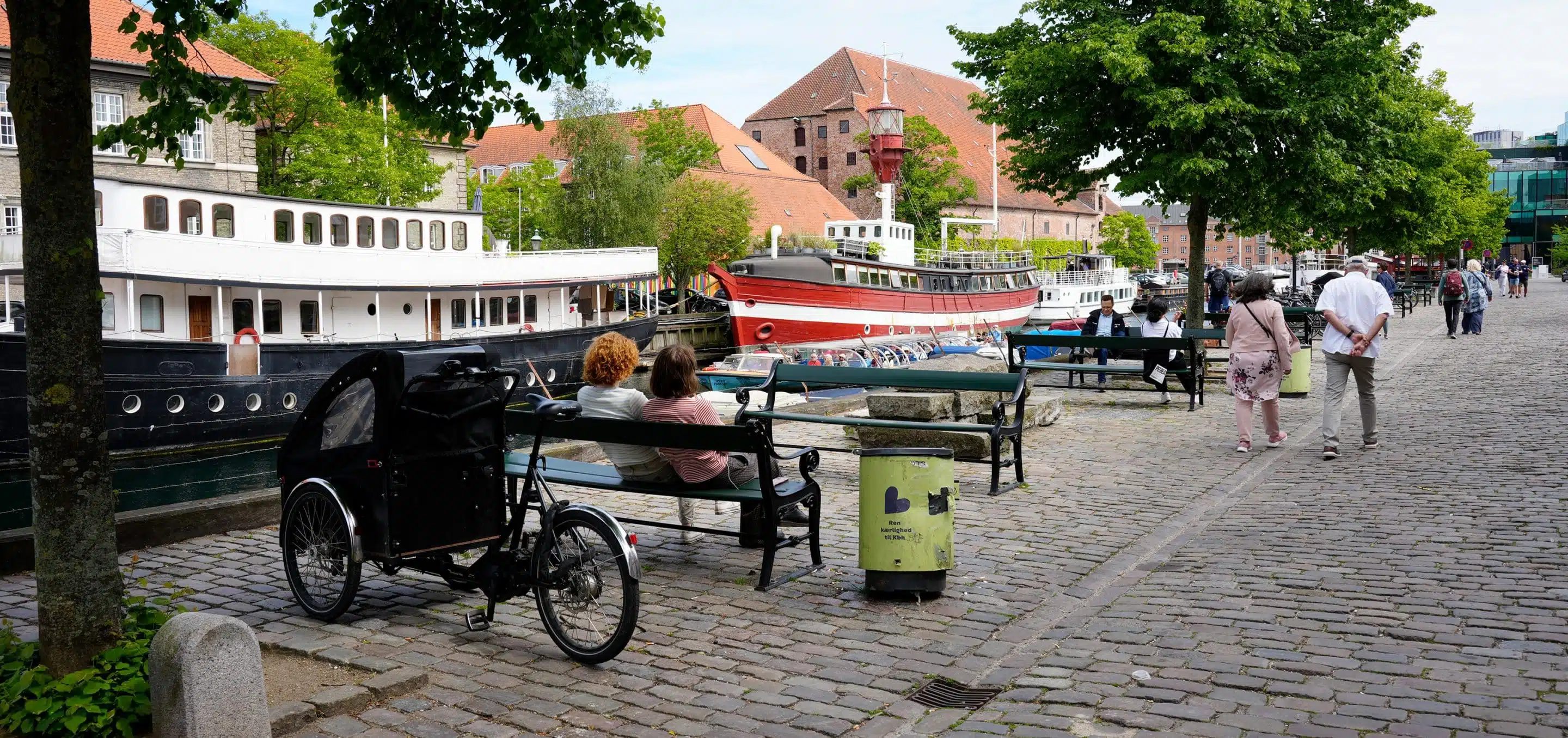
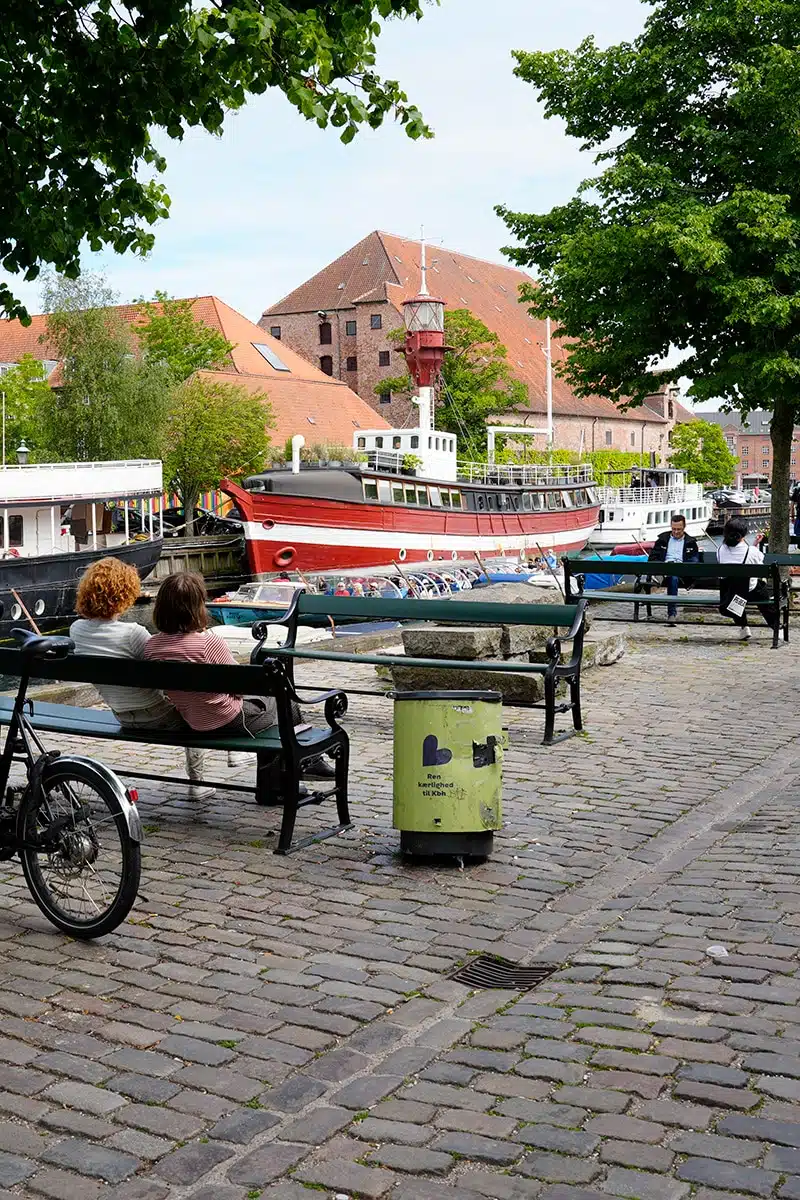
Photo: Asta Melchior Jelsing
In the Palm of Architecture’s Hand: How City Design Shapes Your Life
By Asta Melchior Jelsing
June 6, 2024
The power of architecture is subtle but profound. Architects shape not only our cities but also our behavior. Architecture is everywhere, and we cannot help but react instinctively to what we experience. Meet two experts in behavioral design and discover how architectural design, from benches to buildings, affects your life.
Imagine you are walking through the streets of Copenhagen. The sun is finally out, and you pause briefly on a corner to enjoy the warmth of its rays.
The sidewalk across the street is in the shade, so you stay on the sunny side in search of a place to sit down. The first bench you find is made of marble; while it is beautiful, it is hard and cool despite the sun. You move on, and after passing a few more benches, you find the perfect one. You sit down and watch people pass by.
It is probably not the first time it has taken you more than a moment to find a just the right spot to sit in the city. You are used to it, and even though it might feel like your choices are based on random factors, there are people who are specialized in how to influence your movements and experiences when you move about in the city.
Susan Jayne Thams Carruth is one of those people. She works with crowd movements and how to get people to stop, move in a certain direction, linger, and dwell at a specific location. She does this through her work as an architect and specialist in behavioral design at GXN Innovation, a sister company to the architecture firm 3XN.
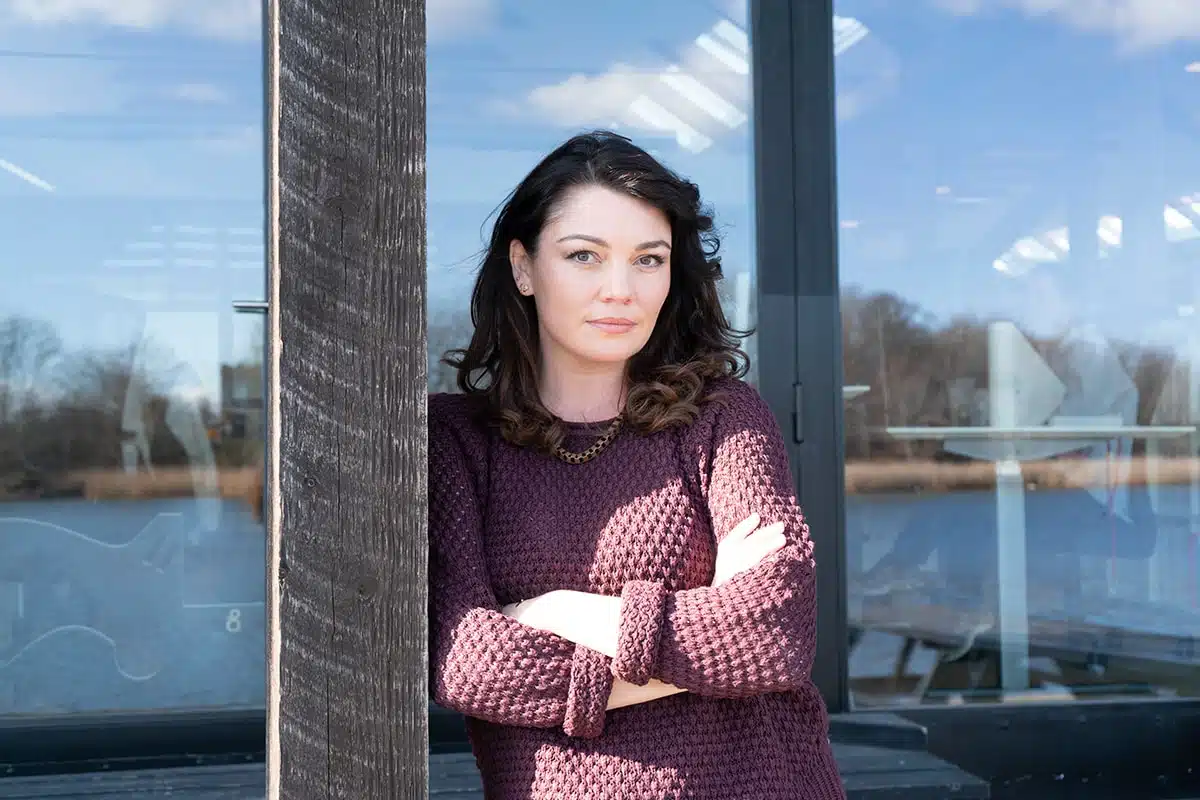
Photo: Private
»We’ll probably never get people to stop completely or slow down significantly. We can encourage or nudge them to move in a certain direction, but there’ll always be other factors that distract them,« Susan Jayne Thams Carruth says.
An Instinct You Can’t Escape
Behavioral design involves designing architecture that affects us in a positive way. Regardless of how the architecture around us is designed, we cannot escape an unconscious and instinctive reaction in our bodies as we move through it.
»It might be something as simple as whether we’re sitting with our back to the wall or in the middle of the room when at a restaurant,« says the behavioral designer from GXN. We instinctively feel exposed and vulnerable if, for instance, we are placed at a table in the middle of the room with our back to the door. The instincts at play here are primal, even though we are in a perfectly normal and safe restaurant in the heart of Copenhagen.
We might experience the opposite when we are out for a walk in nature. Just spending 20 minutes in a forest can lower our pulse and give us a sense of satisfaction.
»That feeling is something we at GXN want to incorporate into our buildings so that people can feel even more content,« says Susan Jayne Thams Carruth.
Perhaps the most vivid example is a prison. It seems obvious that it makes a difference whether you place people in small, unpleasant rooms or in a prison that conveys dignity and humanity.
But it is about more than that, according to Mads Lindholm, who works as a business psychologist and has researched architectural psychology.

Photo: Private
»It’s about self-perception. Sometimes we meet people who just make us want to be around them and who bring out the best version of ourselves,« says Mads Lindholm. This interaction can be transferred to our surroundings. When someone has made an effort, for example by tidying up and keeping the surroundings clean, we feel better.
An example of this is graffiti. Whereas beautiful places are more likely to be spared because of their attractiveness, ugly buildings and facades are often covered in tags and colorful images.
Architecture is Both Seen and Heard
Can we single out what good architecture is, then? According to Susan Jayne Thams Carruth, the answer is no, we cannot. She believes that it will always depend on our needs that specific day.
»I think it depends on our own state of mind and our emotional needs. If, for example, you’re feeling stressed, sad, tired, or hungry, you’ll have different needs and be more sensitive than might be the case on another day,« she says.
Loud, sudden noises can be irritating no matter what kind of day you are having. But it can also be problematic if a building is designed to be completely silent. In fact, people have worked to make spaces as quiet as possible, but silence at that level does not work either. Architects are now trying to bring some noise back into their buildings.
»It’s about finding a balance in auditory stimulation. While we can become overwhelmed by too much noise, if our surroundings are so empty and quiet that it becomes uncomfortable, we become uneasy,« says Susan Jayne Thams Carruth.
Finding a balanced level of stimuli is important in all areas, she emphasizes, also when it comes to visual stimulation.
We do not want to be bored when we look at a building or spend time in it. There should be something to look at, but not too much.
As a rule of thumb, according to the behavioral designer, when we walk down the street something new should happen every 20 to 25 meters. Facades should vary because human beings enjoy change. It can be change over time or variation. When a facade is interesting to look at, we automatically slow down as we pass by. In this way, we may be guided by architecture.
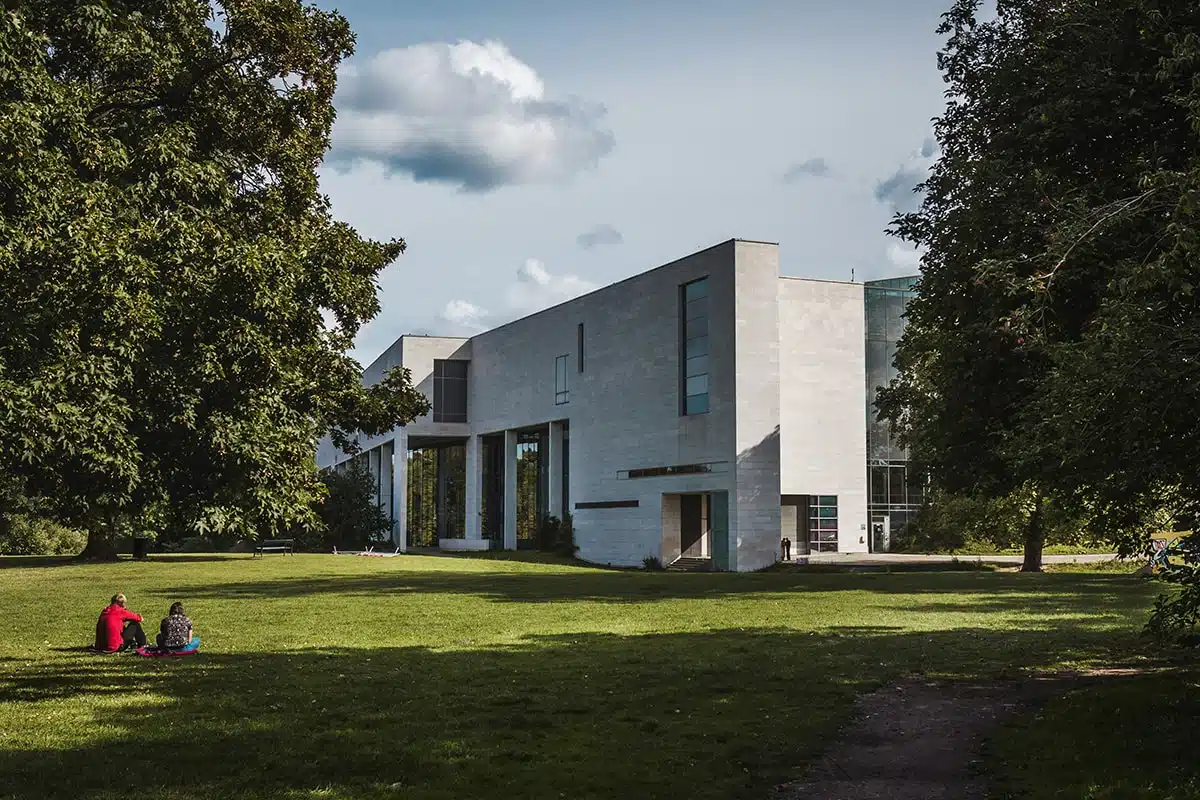
Photo: Kristijan Arsov
How quickly we move through older areas or areas with a lot of new construction may vary significantly, she explains. It is a bit of a generalization, of course, but older buildings often have more details and are built with warmer materials like wood or brick. A typical modern building may have many flat facades and a high degree of repetition. It might be made of steel and glass and other materials that are cool in color and less pleasant to touch.
»That’s not to say that old is good and new is bad,« she says. But she is concerned that not enough emphasis is given to the human experience in some of the newer buildings where focus is on optimization.
The Look of a Classroom, the Smell of a Summer House, and the Taste of an Open Office?
Both Susan Jayne Thams Carruth and Mads Lindholm have heard about experiments that examine effects on taste perception in buildings. Mads Lindholm has an example:
»If you create environments that, for example, include sensory impressions from the sea, you’re likely to find that the food tastes saltier,« he says. In this way, we could influence people to eat less salt just by getting them to eat in a specific environment.
Similarly, we can be influenced by the color of a wall.
»We think white is neutral, but it’s not. So, if we imagine a classroom, for example, it’s about creating a space that’s not boring but also not too stimulating. We can use colors to create a specific mood in the room,« says Susan Jayne Thams Carruth.
Warmer, more saturated colors are more stimulating, while cooler, more muted colors can give a sense of calm. In nature, green fields are interrupted by flowers and natural materials such as wood have a pattern we can focus on. It is about creating moments of interest that break the dull and neutral.
The smell of a building can also be significant. Historically, our sense of smell could tolerate much more than it can today. Cities (and we humans) used to reek of feces, garbage, and animals. As cities developed and modern sewage systems were installed, our sense of smell changed and became more sensitive. Today, the smell of the city is almost neutral compared to earlier times, but the behavioral designer has detected a new trend.
»I think we’re trying to get some of the smell of the city back. And I think people like this development. We like, for example, that the smell of asphalt and wooden buildings changes when it has rained. I think, overall, there’s been a change. In fact, I hope there has,« she says, referring to the new aesthetics we see today that have grown out of the focus on upcycling natural materials. Here, it’s less about everything being uniform, clean, and neutral.
»We must learn to appreciate it more, because we have to move in this direction. And it goes hand in hand with things like texture, scent, and appearance,« she adds.
An Exercise of Power and Coercion or Just Bad Architecture?
If all architecture is designed to get us to act, sense, or feel a certain way, can it then be misused and exploited?
If architecture is too successful at influencing people’s behavior, it can be mistaken for an exercise of power, and if it is unsuccessful, it is considered as bad and confusing architecture. It is a fine balance when it comes to behavioral design.
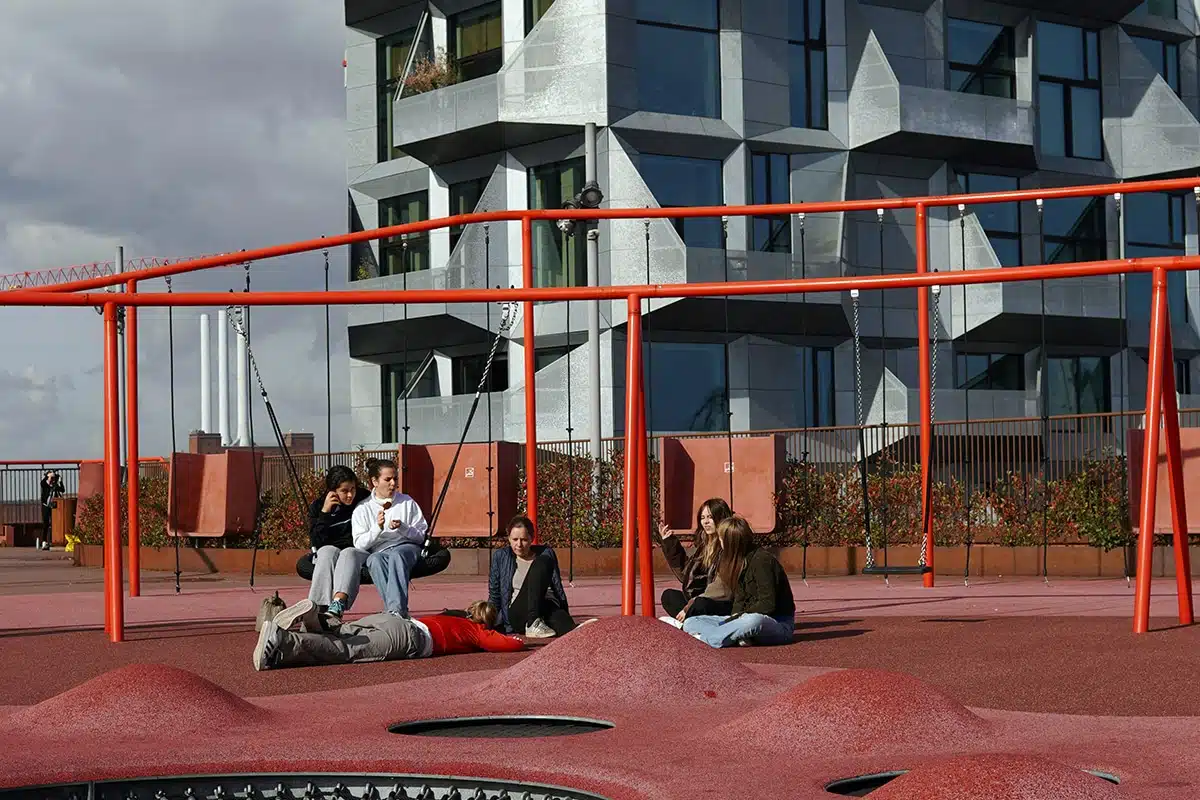
Photo: Dmitry Spravko
The question, of course, is whether people will always react in the way that the architecture intended? Susan Jayne Thams Carruth does not think so. And that is not the intention either. In a study, she found that people moved in a completely different way than was expected in a public space that had a bakery. They were simply distracted by the smell of fresh croissants.
“We can’t design a public space to the point where the design completely controls people, and that’s not the intention either,” she says. Behavioral design is about creating conditions that do not exclude certain behaviors while encouraging others. It is not about controlling and manipulating people’s free choices but about continuously providing options that make the city manageable and feel safe.
All Architects are Behavioral Designers
According to Susan Jayne Thams Carruth, all architects are behavioral designers, whether they realize it or not. She believes that no matter where we are, our surroundings will always affect our body and mind in some way. And we need to understand the implications of this as some architects may not be fully aware of their power.
Today, behavioral design is not part of the brief when a new building or public space is commissioned, and she thinks this is a shame.
»We spend so much time as an industry talking about costs, finances, and aesthetics. Fortunately, we’re increasingly talking about environmental impact, but I think our emotions and human sensory experience should be included too and weighted just as much as the other things,« she says. She believes it should be taken seriously and not be seen as a luxury but rather as a necessity. Because it matters for people’s well-being, their happiness, and their lives.
She hopes that a behavioral designer, sociologist, or similar will be involved right from the beginning when new buildings are planned. And she sees it as her and her colleagues’ task to have a deep understanding of the environment they are building in. And such considerations must be made very tangible.
»It’s not enough to say that we think there should be an inviting entrance to a building. We need to make it tangible what an inviting entrance is and what this means in terms of size, shape, color, material, and sensory impressions. This will make it easier for the architects to use our ideas,« she explains. In the long run, this can make a big difference in the perception of buildings. If we are to convince the entire industry that behavioral design is indeed a necessary discipline, she believes we need to talk about how successful the building will be and how much it will be loved when it’s finished.
This line of thought can also be applied to the benches in the streets of Copenhagen. Which bench gets the most love? It’s the one in the sunny spot, the wooden one, where you can sit warmly and a bit more comfortably. Still, there will always be someone who prefers the marble bench, and that’s how it should be, says the behavioral designer.